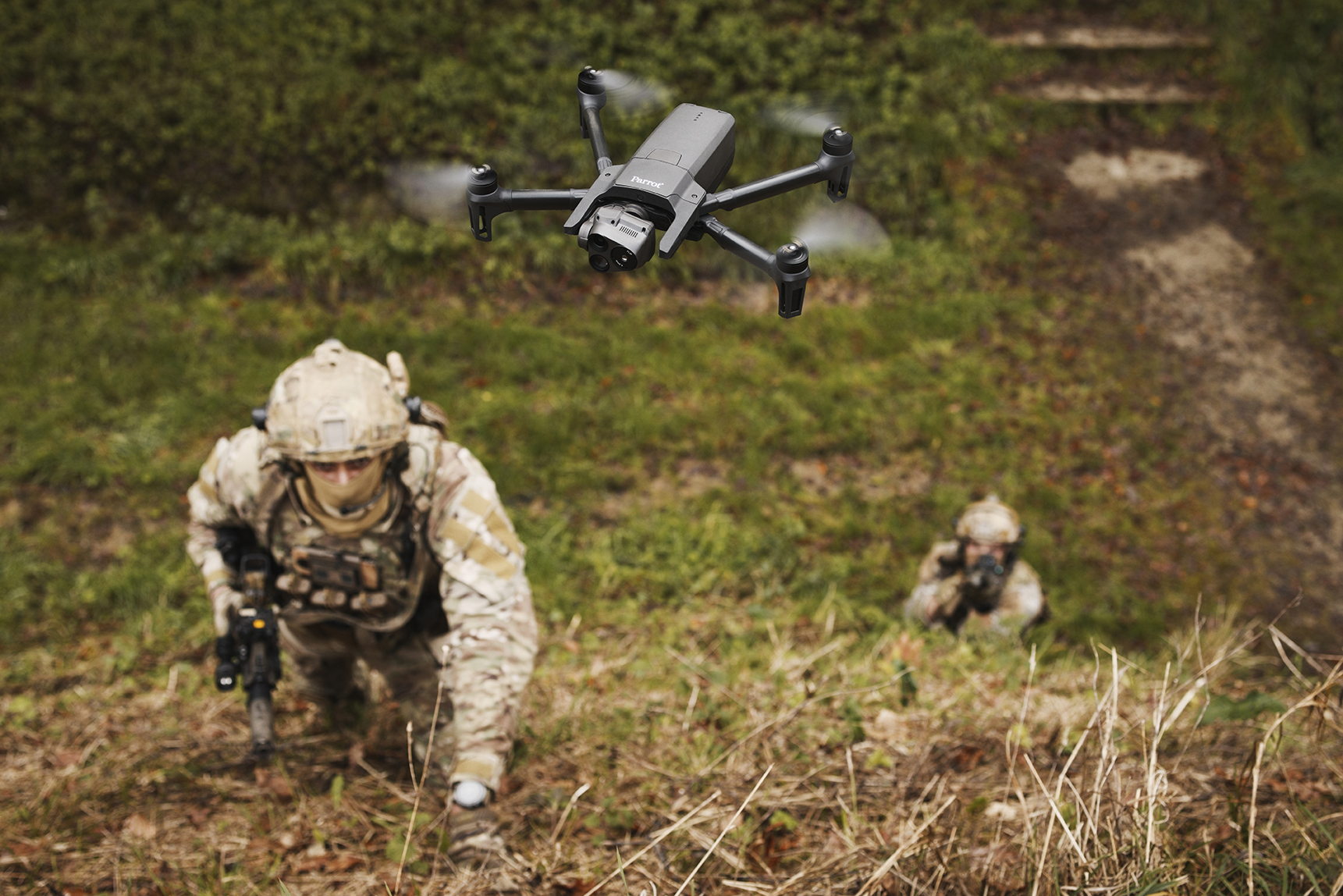The introduction of very small unmanned aerial vehicles (UAVs) has provided small infantry units with a new and potent reconnaissance and combat tool. Armed forces and industry are working to enhance their performance by improving range, endurance and payload capacity.
In the past, infantry forces frequently had no choice but to advance with limited situational awareness of the immediate terrain, accepting the concomitant risk of ambush or forcing them to attack with less-than-optimal intelligence. While these risk factors still exist, nano- and micro-UAVs have proven to be the proverbial ‘game-changer’ in many ways. They provide units down to the squad or fire team level with integrated short-range intelligence, surveillance, targeting and reconnaissance (ISTAR) capabilities. Actionable intelligence can be relayed directly to the operator in real-time and this information can then be used directly by the small unit, or relayed to an upper echelon to feed into the force’s common situational awareness picture.
These micro-aircraft are controlled via hand-held consoles or via laptop, tablet or cell phone apps. Depending on the system and mission, payload options can include optronic sensors, signals intelligence sensors, and/or sensors to detect chemical, biological, radiological, or nuclear (CBRN) threats. They are also useful in scenarios where there is limited line-of-sight, such as urban and woodland settings. Nano-UAVs are generally considered the smallest category of UAV suitable for military operations, with a maximum weight (not counting payload) of circa 250 g. Micro-UAVs constitute the next larger category, with an aerial vehicle weighing up to 2 kg.
Given their very small size, nano-UAVs have an extremely small acoustic, thermal and visual signature; this permits them to approach enemy positions virtually undetected and even enter structures or caves to conduct tactical reconnaissance. Information regarding hostile force dispositions, as well as the location of primary mission targets, can be wirelessly relayed back to the controller, or the UAV can simply return to its operator for manual download of intelligence data. They can also be carried in a standard ammunition pouch and are usually launched by hand.
Being somewhat larger, micro-UAVs have superior payload capacity, and generally also outperform nano UAVs in terms of range, endurance and service ceiling. Payload options can include not only sensors but explosives as well. They can be deployed and retrieved by hand or via special launch platforms.
Systems and capabilities
Modern nano- and micro-UAVs display impressive capabilities, especially for aircraft of their size. A representative survey of operational and soon-to-be operational systems illustrates the spectrum of their capabilities.
Bug 4.1
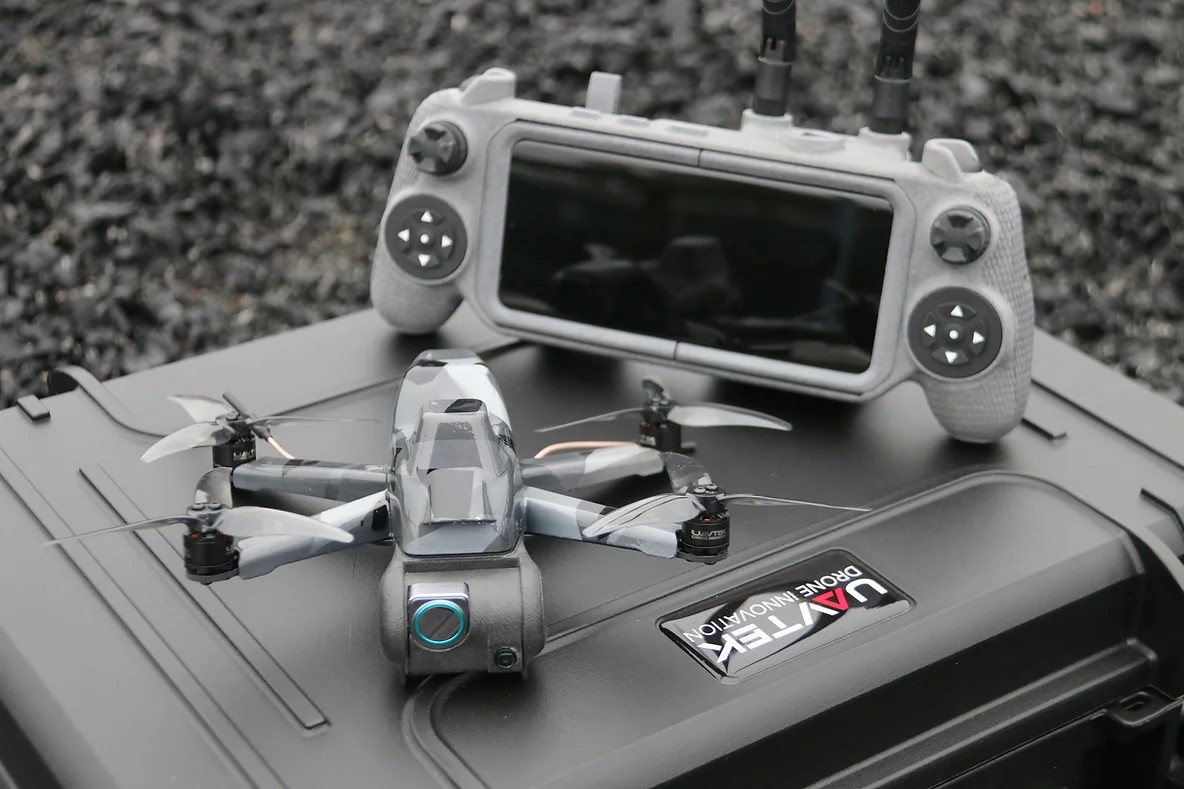
Credit: Uavtek
The Bug UAV was developed by British firm Uavtek in collaboration with BAE Systems. The original variant weighs in at 196 g or – as the manufacturer points out – approximately as much as a cell phone. The battery permits a 2 km operating range, or approximately 40 minutes of flight endurance. The British Army received the first batch of 30 in 2020 and since then, Uavtek has continued to refine the system. The latest iteration, the Bug 4.1, weighs less than 350 g and has a range of 3 km. The UAV is launched and recovered by hand. The lossless HD zoom camera incorporates a thermal imaging capability, with data transmitted to the operator via a secure wireless link or encrypted SD card.
Additional payload options include microphone/listening device, loudspeaker, various lights (white/red/infrared), a mapping system and a distraction device. Sensor data can be simultaneously transmitted to multiple locations; qualified receivers include mobile phones, laptops, tablets and the Android Team Awareness Kit (ATAK). An integrated GPS follow-the-leader kit prepares the Bug 4.1 for UAV swarm deployment. Flight endurance is 30 minutes at a maximum speed of 80 km/h; however, potential mission endurance is considerably longer as the drone can land at its target site and continue to transmit sensor data for several hours. While the vehicle’s overall dimensions are 25×20.5×7.5 cm (LWH), the firm continues to classify it as a nano-system, likely in part due to its low weight.
Ninox 40 MT
The Ninox 40 MT (micro tactical) developed by the Israeli firm Spear UAV is launched from a 40 mm tube, grenade launcher, or a baton-sized hand-held capsule/launcher; in flight, it is controlled via tablet. This nano-UAV is the smallest member of the Ninox family of nano-/micro-UAVs, weighing less than 250 g, and with a flight endurance of 35 minutes. Like most small UAVs, it requires only minimal training to operate.

Credit: Spear UAV
Artificial intelligence controls the integrated day/night camera system and enables automatic tracking of objects of interest. Sensor data is relayed via a commercial-off-the-shelf (COTS) secure two-way datalink, with the launch capsule functioning as the wireless router connecting the drone with the tablet. The navigation system combines global navigation satellite system (GNSS) and inertial navigation system (INS) guidance to ensure continued operations even in signal-denied environments. Mesh networking and swarm capabilities are integral to the system, including the ability to feed targeting data to Spear UAV’s Viper loitering munitions. The Ninox 40 MT has been demonstrated to US armed forces and is assumed to be in service with the Israeli military.
Black Hornet 4 PRS
US-based Teledyne FLIR unveiled the Black Hornet 4 Personal Reconnaissance System (PRS) in October 2023. Compared to older variants of the Black Hornet family, this newest member features enhanced range, endurance, signature and imagery data. Capabilities of the 70 g UAV include a 30 minute flight endurance, more than 2 km range, and the ability to operate in 13 m/s (25 kn) winds, in addition to a maximum speed of 36 km/h. An improved battery and a new obstacle avoidance system enhance flight performance with the system also able to operate in GNSS-denied environments.
On the latest model, sensors have also been upgraded. The Black Hornet 4 is equipped with five cameras providing a combined 270° field of view (FOV). These include three low-resolution day cameras for navigation and obstacle avoidance, a new 12 MP forward-looking low-light capable HD day camera with a 125° FOV, and a thermal camera with 650×512 resolution and a 78° FOV (the world’s smallest thermal camera, according to Teledyne FLIR); and an ultrasonic sensor.
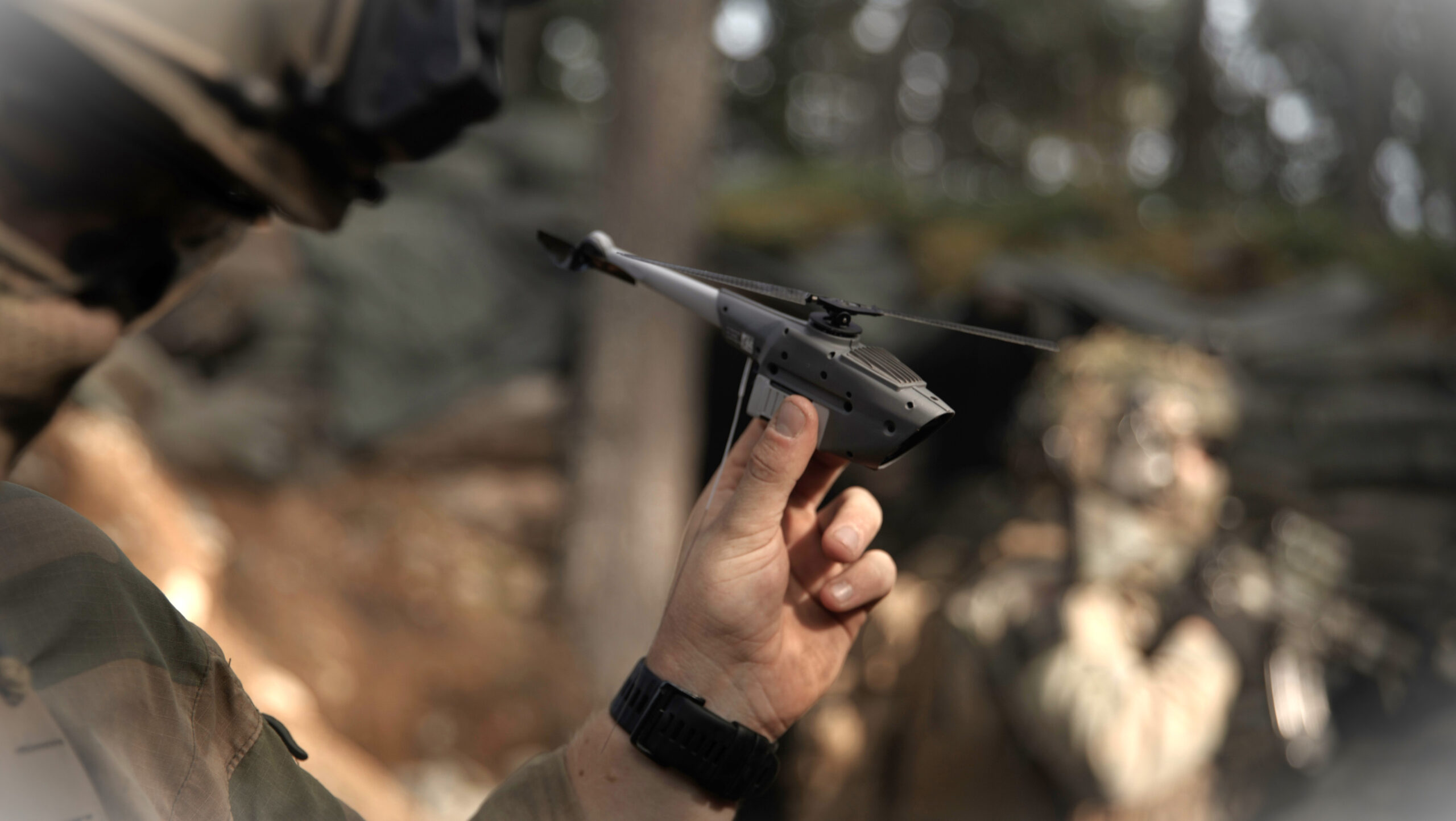
Credit: Teledyne FLIR
Black Hornet 4 is configured for use by dismounted personnel, although it can also be deployed by hand through the hatch of a vehicle. The nano-UAV and the dedicated controller (which includes the joystick controller as well as a video screen which displays the camera feed in real time) are carried in a hardened pouch or ‘hangar’ attached to the operator’s vest or webbing. The complete system – including extra batteries being charged in the hangar – weighs less than 1.3 kg. The aircraft can be deployed within 20 seconds, permitting immediate ISR when a tactical situation arises. An optional ‘zipline’ mode permits the UAV to continue flying on a straight path while rotating its body to direct its forward-facing cameras in various directions.
Anafi
French drone-maker Parrot designed its Anafi USA micro-UAV for defence, public safety, government agencies, first responders and enterprise. The ANAFI USA is used by numerous US Federal Agencies, Defence Forces of the United States, Finland, France, Japan, Spain, the United Kingdom, fire brigades, police forces and coast guards. Manufactured in the USA the ANAFI USA weighs 500 g and can be folded for easy carriage. Unfolded, the flight-ready dimensions are 28×37×8.2 cm. Flight endurance is 32 minutes per battery charge; the system is sold with three interchangeable batteries to enable quick turn-around times. The ANAFI USA’s body is mainly made of polyamide reinforced with carbon fibre and streamlined using hollow glass beads, which minimises the system’s weight while enhancing structural integrity. According to the firm, the blades were inspired by the pectoral fins of humpback whales; these blades optimise lift and simultaneously minimise acoustic signature.

The satellite navigation system can operate using GPS, GLONASS, and Galileo. The most impressive element of the ANAFI USA is its triple camera module. It includes a 32× continuous zoom 21 MP camera and a FLIR Boson thermal camera with 320×256 pixels resolution. The main camera allows for detection of human-sized targets at 2 km and can read licence plates from an altitude of 130 m. The flight application can merge thermal and RGB camera images for highly defined thermal inspections and tactical missions.
To expand the ANAFI USA’s capabilities further, Parrot is leveraging its global network of partners, adding, for example, battlefield awareness software, beyond-visual-line-of-sight flights for automated deployments, distraction tactics, and advanced lighting.
Wolverine
The Wolverine micro-UAV developed by Israeli firm Xtend offers advanced capabilities beyond ISTAR. The multi-mission UAV’s forward- and downward looking sensors include a 40× zoom day/low-light capable camera as well as a FLIR Boson thermal camera. The vehicle’s onboard AI capabilities evaluate the imagery in real time, identifying and categorising vehicles and humans, as well as highlighting armed personnel; a top speed of 70 km/h makes the Wolverine a very fast micro-UAV, and permits short-term pursuit of moving vehicles. This 1.3 kg UAV is equipped with a robotic gripper which can carry up to 2 kg of payload or manipulate objects during the course of its mission. The vehicle has an endurance of 30 minutes, or a maximum line-of-sight (LOS) range of 7 km.

Credit: Xtend
The Wolverine can also carry and precisely deposit surveillance devices, such as the Xaver 100 through-wall life detector, strobes and homing devices, small supply payloads, and even explosive charges. The latter is especially useful for neutralising mines and IEDs ahead of advancing soldiers without sacrificing the drone. Conversely, the Wolverine can retrieve small items or sling loads (up to its payload limit) from the field. The rotary propulsion system enables the Wolverine to access and hover even in small or hard-to-access areas.
Black Recon
Most nano- and micro-UAVs are optimised for use by dismounted personnel (although they can be deployed through open windows or vehicle hatches). Teledyne FLIR is currently working on a new system which will provide mounted crews with their own beyond-line-of-sight aerial reconnaissance, surveillance and target acquisition capabilities. The Black Recon concept was unveiled in September 2023 at the DSEI exhibition in London, and the idea comprises three UAVs carried in a hardened launch box atop a vehicle. Soldiers would be able to deploy and recover these UAVs from moving vehicles while remaining secure under armour. Among other benefits, this would provide the ability to conduct en-route terrain evaluation and threat assessments ahead of the vehicle, potentially permitting ground forces to advance more quickly.
The box weighs less than 80 kg, measures 68×65×45 cm, and can accommodate a wide variety of UAVs. According to the firm’s press release, Teledyne is currently developing a completely new micro-UAV configured to withstand the physical rigours of travelling on combat vehicles. The UAVs will carry optical and thermal sensors, and operate in signal-denied environments. They will weigh circa 350 g each and have a 45 minute mission endurance. The operational profile envisions a service ceiling of 3,600 m and within a temperature range of -20°C to +49°C.
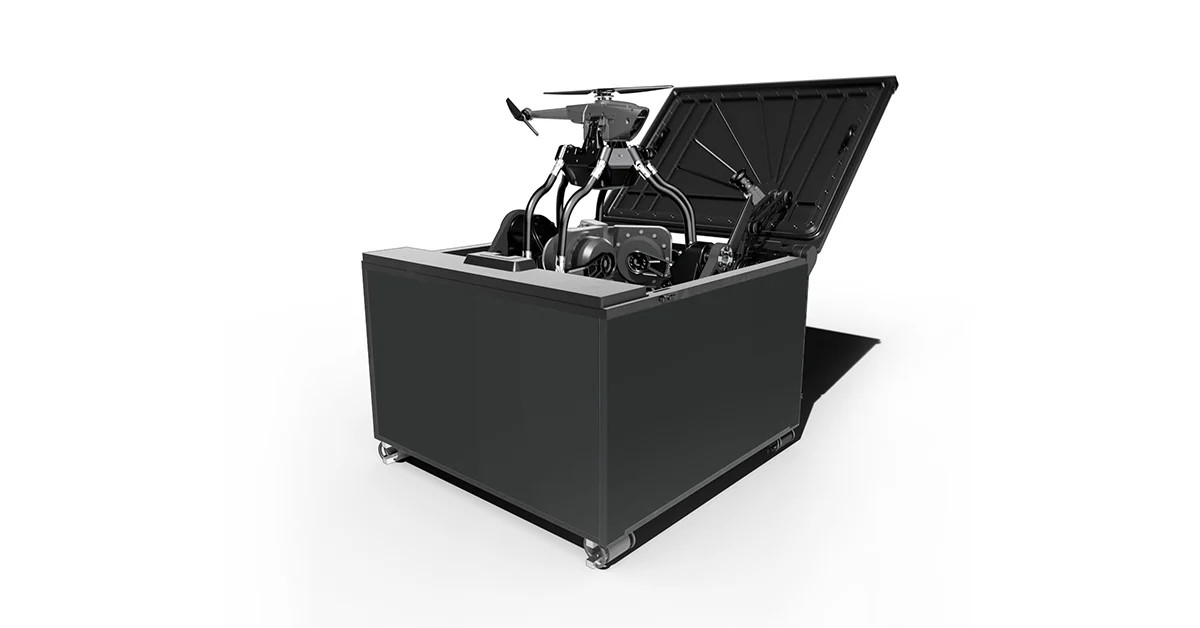
Credit: Teledyne FLIR
Black Recon replaces the Black Hornet Vehicle Reconnaissance System which FLIR Systems introduced in 2018, but which ultimately proved too light to satisfy mission requirements. Development of Black Recon began in 2020 with the support of the Norwegian Defence Research Establishment. Teledyne FLIR expects to begin marketing the new system in mid-2024, with deliveries beginning in early 2025.
Future capability enhancement
While today’s nano- and micro-UAVs display significantly greater capacity than earlier systems, there are still limitations regarding speed, endurance, range and payload capacity. Improvements in any or all of these areas would enable forces to collect even greater and more detailed actionable intelligence prior to advancing or striking. This would permit optimised mission planning and have the potential to reduce casualties and improve the probability of successful mission execution. The two prime factors which could influence these performance parameters are enhancement of the propulsion and energy system, and weight reduction. New composite materials promise to make UAVs lighter and more resilient, enabling even current motors to lift heavier payloads or improve mission range and speed. Batteries continue to be a major weight factor. Current research at MIT suggests that using a solid ceramic electrolyte rather than a liquid electrolyte could produce solid-state Lithium batteries with greater energy density than current Li-ion batteries, allowing for greater mission range and endurance on platforms which use them. Additional research conducted at Monash University in 2023 suggests that Lithium-Sulphur (Li-S) batteries could ultimately provide a lighter and more powerful alternative to Li-ion.
Mission systems also offer abundant room for performance enhancement. The cameras in the UAVs reviewed above all surpass the capabilities of previous generation sensors. Moreover, the future will see continued upgrades of sensor performance. In addition to video, thermal and audio, additional sensor payloads including NBC detection and signals intelligence capabilities may become more widespread. Offensive electronic warfare capabilities as well as laser targeting systems to illuminate targets for semi-active laser (SAL) guided weapons will constitute major additional enhancements to nano- and micro-UAV capabilities. Lethal payloads will increasingly become possible for even the smallest UAVs, enabling their deployment as loitering munitions or attack drones.
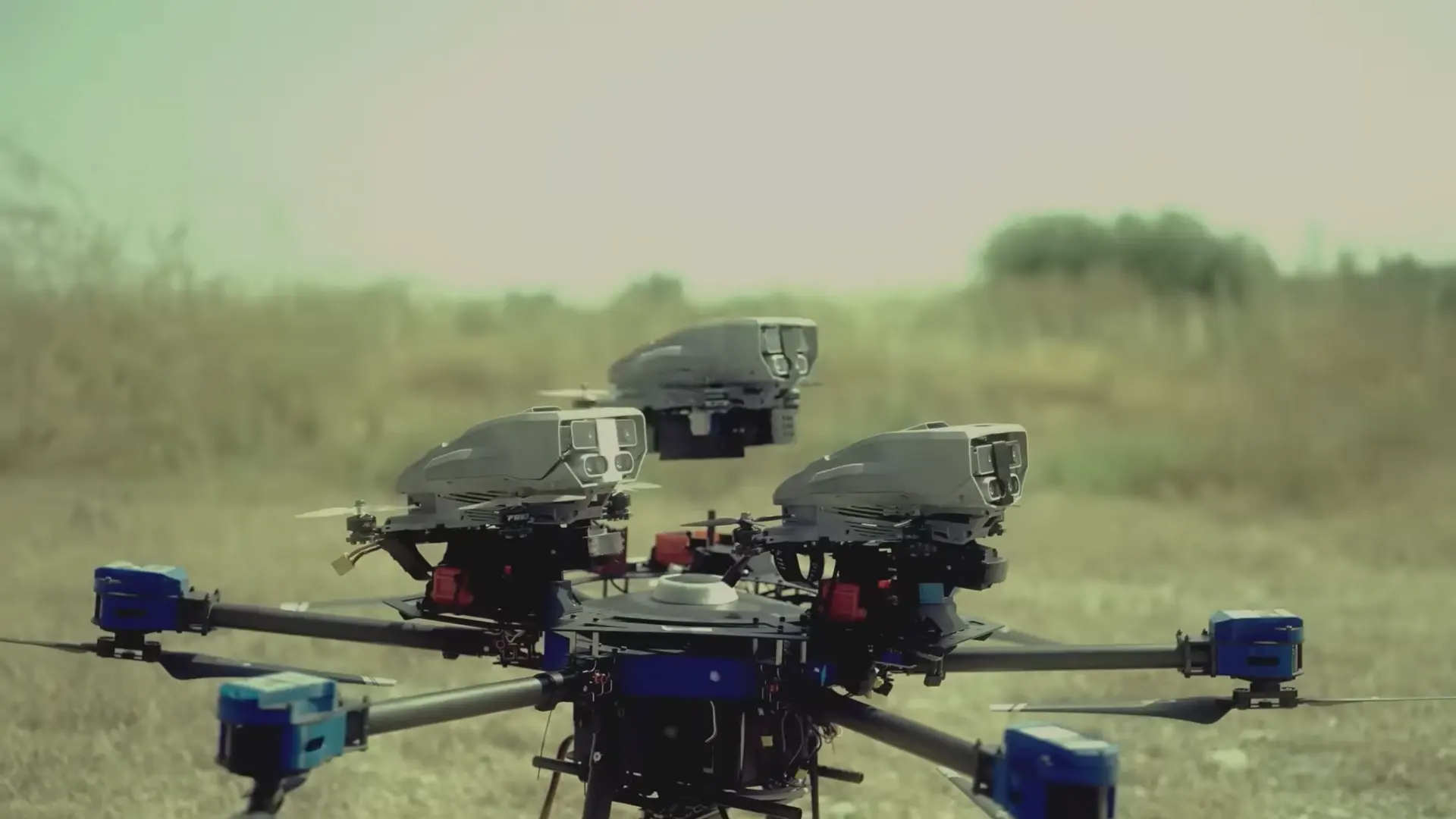
Credit: Elbit Systems
Elbit Systems has taken a first step here, introducing the Lanius in November 2022. The roughly 1.25 kg system can carry a 125 g close proximity high explosive charge for targeted strikes, or non-lethal payloads to support special operations and hostage-rescue missions. Alternatively, it can deploy as a standard reconnaissance and area-mapping system. The UAV’s 29.4 x 29.4 x 16.7 cm dimensions permit passage through open doorways and windows, pipelines and sewage systems as well as tunnels, making Lanius suitable for operations in urban or restricted terrain. While flight endurance is only seven minutes, mission endurance can be considerably longer if the UAV lands and transitions to surveillance mode. It can also launch and revert to attack mode upon command or upon identifying an emerging target; the sprint speed of 72 km/h increases the odds of a successful surprise attack.
Of course, all UAV missions depend on reliable communications and navigation. Secure two-way command, control and communications systems will remain a focal point of research and development. The same holds for AI progression in order to ensure accurate navigation and enhance the UAV’s ability to autonomously classify targets and accurately complete missions in the event of communications disruption.
Sidney E. Dean



